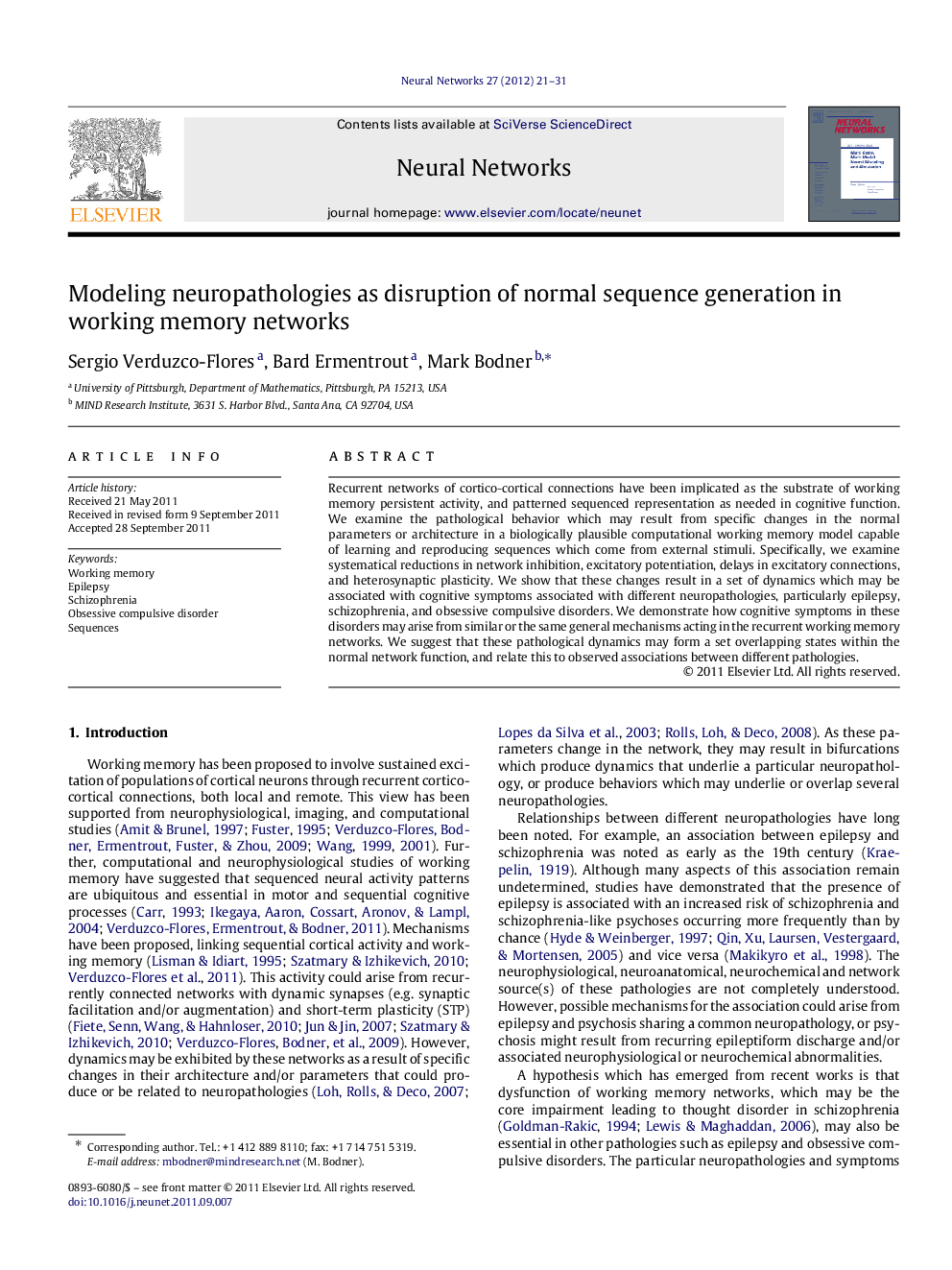| Article ID | Journal | Published Year | Pages | File Type |
|---|---|---|---|---|
| 406651 | Neural Networks | 2012 | 11 Pages |
Recurrent networks of cortico-cortical connections have been implicated as the substrate of working memory persistent activity, and patterned sequenced representation as needed in cognitive function. We examine the pathological behavior which may result from specific changes in the normal parameters or architecture in a biologically plausible computational working memory model capable of learning and reproducing sequences which come from external stimuli. Specifically, we examine systematical reductions in network inhibition, excitatory potentiation, delays in excitatory connections, and heterosynaptic plasticity. We show that these changes result in a set of dynamics which may be associated with cognitive symptoms associated with different neuropathologies, particularly epilepsy, schizophrenia, and obsessive compulsive disorders. We demonstrate how cognitive symptoms in these disorders may arise from similar or the same general mechanisms acting in the recurrent working memory networks. We suggest that these pathological dynamics may form a set overlapping states within the normal network function, and relate this to observed associations between different pathologies.
